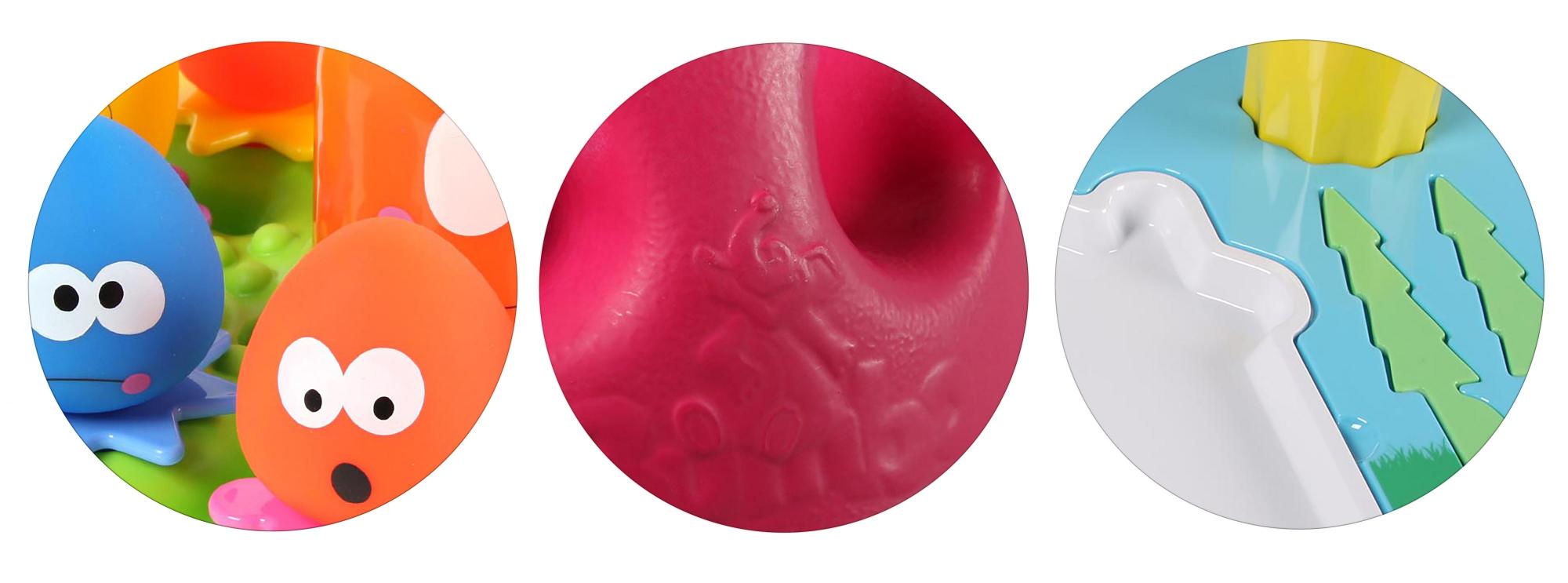Pre-school plastics
Designing products for young children and babies under the age of four is different from designing for adults. The designer has two audiences to please; the child with their specific physical and sensory needs, and the adult who will be purchasing the product.

Babies and children are not miniature versions of adults. Physically, they have different proportions, young babies have relatively large heads that they cannot support themselves, and limbs that they are not yet able to control. In their formative years, children need to learn how to exist in the world around them. Cognitively, they learn through their senses. They need to see, touch, taste, experiment, and find out what they can and cannot do. They explore the world around them by taking risks without understanding what the consequences might be.
Designers need to create products that offer the child safety and comfort, as well as aids to develop gross and fine motor skills, and provide convenience to the adult care giver.
Plastics materials offer safety and comfort in the form of smooth, moulded surfaces with softly contoured edges, hygienic feeding equipment, and insulated temperature control. The bright colours, and high contrasts that can be achieved with plastics enable babies to see shapes easily, and the moulded ergonomic forms help children learn to sit well and hold tools.
The care giver has the convenience of lightweight, foldable equipment that can be stowed away easily. Wipe clean surfaces give peace of mind knowing that the products are hygienic. They also have the satisfaction that products will fit in with their own life style and philosophy.
This exhibition explores a number of areas where designers have utilised the specific properties of plastics materials to create products that fulfil the needs of both the child and the care giver.
